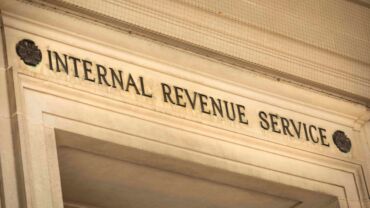For business owners, payroll is complex and often their greatest expense. For accounting professionals, payroll services have long been viewed as a time-consuming, high-risk loss leader. Payroll errors are certainly a real concern, but with the right tools and resources in place, payroll services can be a growth opportunity for firms.
Today’s global workforce, remote and hybrid work environments, and the ever-changing regulatory landscape have added additional layers of complexity to payroll. In fact, a 2022 “Future of Payroll” survey by Ceridian found that 85 percent of respondents have problems with their payroll technologies and 69 percent said they have payroll data issues.
More specifically, the survey found that compliance challenges (43 percent), managing the complexities of multi-jurisdictional payroll (34 percent), and inefficient processes (27 percent) are the biggest pain points of payroll.
However, the survey also uncovered the need for many organizations to modernize their approach to payroll as just over half (54 percent) of respondents said they use cloud-based technology to process payroll.
To better help clients navigate payroll, it is important that accounting professionals understand some of the most common payroll mistakes and how to avoid errors before they arise.
What are common payroll errors?
The top five payroll errors are:
- Misclassifying employees
- Incomplete records
- Overlooking fringe benefits
- Wage garnishment noncompliance
- Missing deadlines
When businesses don’t have the proper resources at hand, these payroll mistakes can happen. Let’s take a closer look at each problem.
Misclassifying employees
Businesses need to properly classify workers (i.e., employee or independent contractor) and failure to do so can lead to hefty penalties.
The U.S. Department of Labor (DOL) released in October 2022 proposed rules rescinding current worker classification rules (2020 final rule) and reverting to prior guidance.
The 2020 final rule established a new standard for determining a worker’s status based on two core factors: (1) the nature and degree of the worker’s control over the work, and (2) the worker’s opportunity for profit or loss based on initiative and/or investment. Other factors would only be considered if the two core factors were not helpful in making a worker determination.
The proposal proposes a framework more consistent with longstanding judicial precedent on which employers have relied to classify workers as employees or independent contractors under the Fair Labor Standards Act (FLSA). It would restore the multi-factor, totality-of-the-circumstances analysis to determine whether a worker is an employee or an independent contractor under the FLSA.
Todd Lebowitz, a partner at BakerHostetler, said the proposed rules would only apply to FLSA requirements such as minimum wage, overtime requirements, and recordkeeping. A DOL determination would have “no direct impact on tax withholding,” Lebowitz noted.
Incomplete records
Incomplete or missing records can cause a lot of headaches for employers. The FLSA requires that employers keep records for at least three years. Records used to compute pay should be kept for two years (i.e., timecards, work and time schedules, and records of additions to or reductions from wages). Such records must be made available for inspection by Department of Labor representatives.
In addition to federal requirements, many states have their own record-keeping requirements for employers that must be considered.
Overlooking fringe benefits
A fringe benefit is a form of pay for the performance of services. For example, allowing an employee to use a business vehicle to commute to and from work is a fringe benefit. And any fringe benefit an employer provides its employees is taxable and must be included in the recipient’s pay unless the law specifically excludes it.
Additional factors include but are not limited to: If the recipient of the taxable fringe benefit is an employee, the benefit is generally subject to employment taxes and must be reported on Form W-2.
If the recipient is not an employee, the benefit isn’t subject to employment taxes. However, they may have to report the benefit on one of the following information returns: Form 1099-NEC, Nonemployee Compensation (for independent contractors) or Schedule K-1 (Form 1065), Partner’s Share of Income, Deductions, Credits, etc. (for partners).
Wage garnishment noncompliance
As defined by the DOL, “Wage garnishment is a legal procedure in which a person’s earnings are required by court order to be withheld by an employer for the payment of a debt such as child support.” Wage garnishments can pose a significant compliance burden for employers and can prove especially difficult given that requirements vary by type of jurisdiction and the type of debt.
The employer is responsible for calculating the garnishment amount, withholding it through its payroll process, and forwarding payments to the correct agency or creditor. And an employer’s failure to properly comply can result in significant penalties.
Missing deadlines
Federal taxes must be deposited on specific dates. However, those dates are partly determined by the total taxes employers report on Form 941. Failure to comply with due dates can spell costly fines.
How often do payroll errors occur?
Mistakes happen and, unfortunately, this means that payroll errors are fairly commonplace. One study by the Internal Revenue Service (IRS) found that 33 percent of employers make payroll errors each year, resulting in costly amendments and penalties.
In fact, the IRS penalizes nearly 1 in 3 businesses for payroll mistakes.
Checking payroll accuracy
Payroll errors can happen when an employer’s payroll personnel lack sufficient payroll knowledge or lack the proper processes and procedures. One way firms can help employers is to perform a payroll audit.
Charles Hall, a practicing CPA and Certified Fraud Examiner, suggested walking through payroll — from the hiring of an employee all the way through to a payroll payment and posting — to identify any control weaknesses. During the walkthrough, consider such questions as:
- Who monitors compliance with payroll laws and regulations?
- How are payroll tax payments made? How often? Who makes them?
- What paperwork is required for a new employee? For a terminated employee?
- What controls ensure the recording of payroll in the appropriate period?
Furthermore, inspect documents (e.g., payroll ledger) and make observations (e.g., who signs checks or makes electronic payments?) It is also important to understand the risks of material misstatement and decide what substantive procedures should be performed.
In summary, Hall stated that the keys to auditing payroll “include risk assessment procedures, determining relevant assertions, assessing risks, and developing substantive procedures. My go-to substantive procedure is to reconcile payroll to 941s. I also review payroll withholding accounts and recompute salary accruals. Comparisons of payroll expenses are useful. Finally, if merited, I perform fraud-related payroll procedures.”
What happens when payroll makes a mistake?
If a payroll tax mistake is made, it is important to work with the client to resolve the issue as quickly as possible. If the mistake was made on your end, offer to file an amended return for the client at no extra charge.
The relevant form to file is Form 941-X, Adjusted Employer’s Quarterly Federal Tax Return or Claim for Refund. This form notifies the IRS of any over or underreporting of payroll taxes.
The IRS has three years to assess tax liability against an officer of a business and 10 years before the liability expires so it is imperative to swiftly fix any mistakes with payroll taxes.
When it comes to overpayments or repayments, recover net from overpayments that are repaid in the current year and gross from overpayments that aren’t repaid until a subsequent year.
How long do you have to correct a payroll error?
The short answer: it depends. For instance, if an employee is looking to recover wages lost due to underpayment they have two years from the date when the underpayment took place.
If an overpayment was made to an employee, the statute of limitations depends on which state’s laws apply.
The bottom line: payroll corrections should be made immediately and not put off until the next pay period. The cause of the payroll error should then be investigated to avoid future mistakes.
How to avoid payroll errors
To avoid payroll errors, keep watch for common payroll control deficiencies that clients may have fallen victim to. These include, but are not limited to:
- One person performs two or more tasks such as entering time or salary rates in the payroll system and approving payroll payments to employees.
- No one reviews and approves recorded time.
- Appropriate procedures for adding and removing employees are not present.
Payroll is complex and one of the most regulated functions in an organization. Navigating federal, state, and local jurisdiction requirements can be daunting for employers. With a robust, full-service payroll software solution in place, accountants can strengthen their role as a trusted advisor and turn payroll into a profit center. Learn more with a free, cloud-based trial of Accounting CS Payroll.
To learn more about current challenges accountants face, read “Top accounting issues in 2023.”











